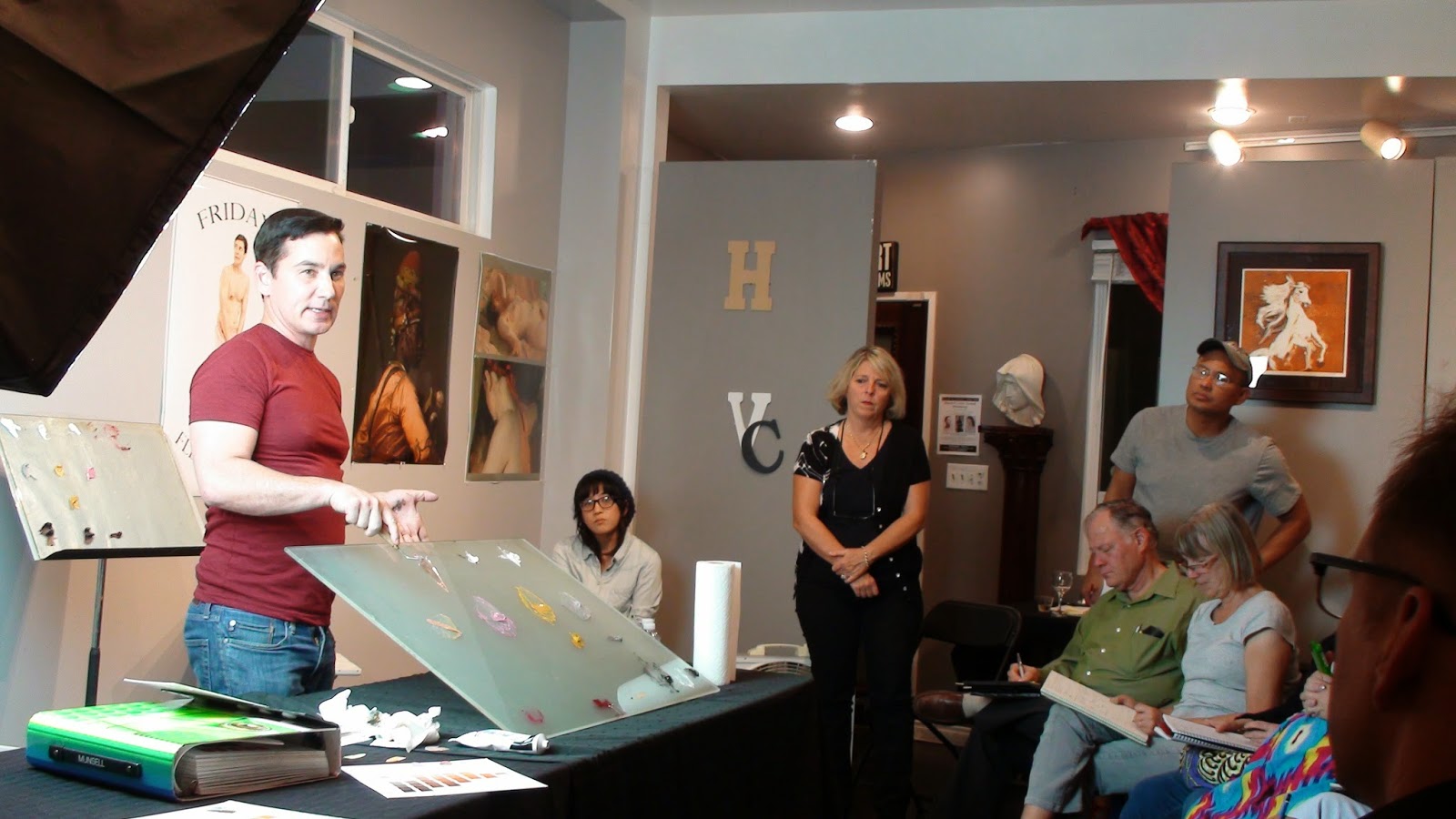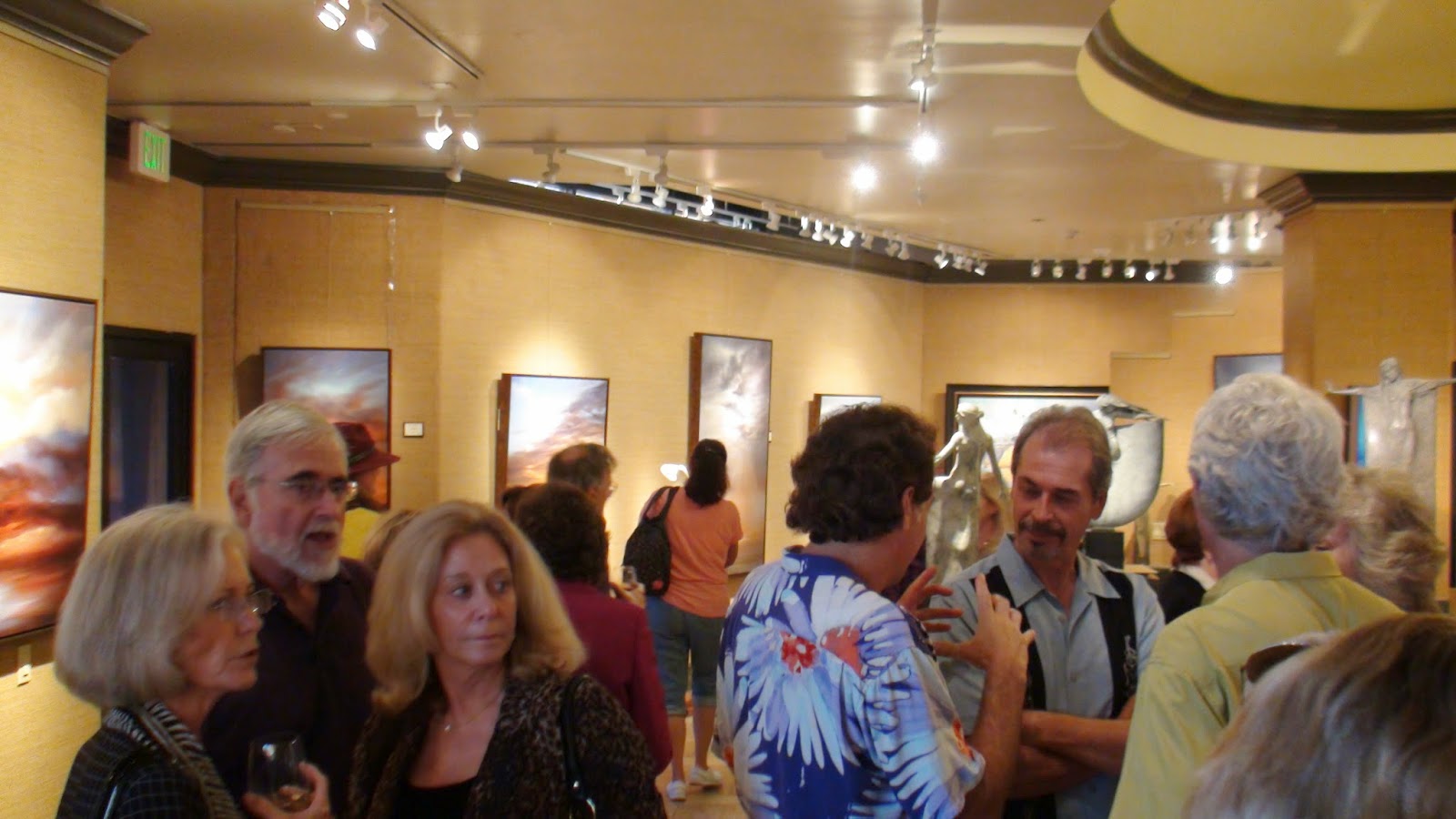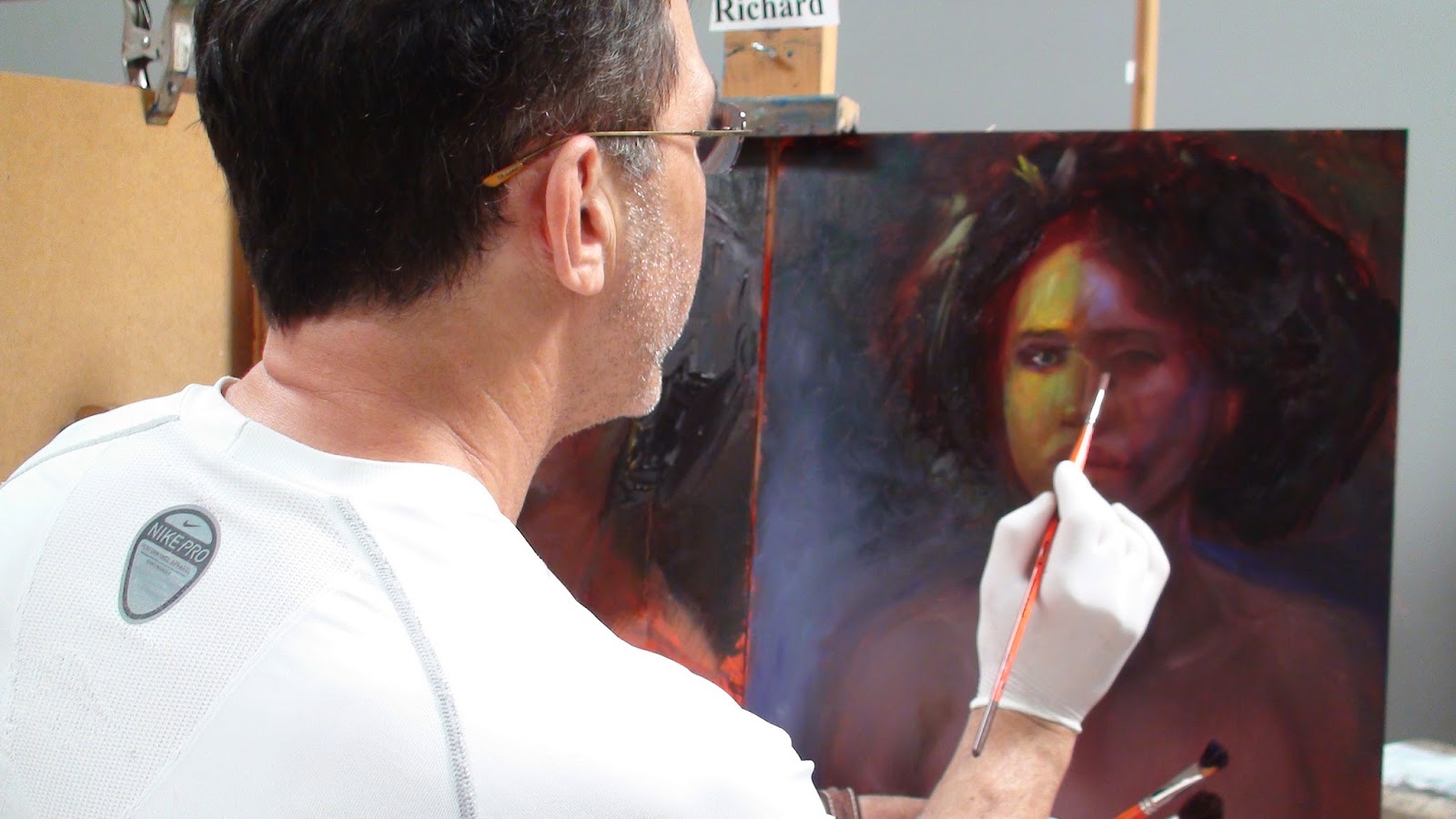Regarding "The Munsell Color System" A workshop with Graydon Parrish
by CHERYL KLINE
Last weekend, we were fortunate to host one of the best figurative artists I have ever met, Graydon Parrish. Graydon's
work can be found in many public collections including the New Britain
Museum of American Art, the Butler Art Institute and the Blanton Museum
of Art as well as the personal collections of Michael Huffington,
Christopher Forbes and Carmen Dell'Orefice.
Graydon is known for his acute knowledge of the "Munsell Color System." This system is a color space that specifies colors based on three color dimensions: hue, value (lightness), and chroma (color purity). There are large books by Munsell with color chips which help you to locate the exact colors for your paintings.
Learning to mix the perfect skin tone...
Our workshop was geared specifically to mixing more accurate skin tones. By bracketing, (see image at right) with your hues, and concentrating on the value first and then in a grid like manner, work across to find the correct chroma. We started with a neutral: 3 parts ivory black and one part raw or burnt umber. Mix together and then mix for example a value of 5 or find the value of the skin tone you are trying to mix. In the second column is Yellow Ochre with Burnt Umber at the bottom, white at the top and the 3rd column is Windsor Quinacridrone Red at the bottom, mixed with white in the middle to the correct value. Then mixing horizontally, a neutral, yellow and a pink, we found our perfect skin tone match to a color chip Graydon gave us. If you would like to know more about "bracketing" to mix colors, come by one of our classical painting classes for a demo.
Painting an Orb is harder than you think!
On the last project, Graydon had us all mix a particular skin tone based
on one of the color chips from the book. He gave us all a half orb
which we tacked onto our canvas and
painted the orb one solid color. He wanted us to see how light and
shadow affect a form and how the hue, value and chroma changes with the
light. We mixed, using the bracket system above, several variations of
local color, half tones and shadows. Then it was our turn to create the
three dimensional illusion.
 | |
| This is my painting on the right. |
How will this information change my painting or teaching?
First,
I have to say, never stop learning. If we keep setting the bar higher
and higher for ourselves, the sky is the limit. This workshop reminded
me how gray and neutral most of our skin tones really are and that on
the spectrum of color they occupy a very narrow range in hue, value and
chroma, mostly neutrals. I personally mix color instinctively since I
have been painting for so many years and as an art director on press
runs, my job was to correct color. So to teach a student color mixing, I
have a new tool to use to explain how to find the perfect match.
There
was much, much more to this workshop...too much information to put into
a short email, but I wanted those of you who could not make it to the
evening demo or the weekend event, to know a little bit of what we
learned.
At Kline Academy, we will teach you foundational skills to reach your artistic goals... and then we may challenge you to break the rules to see what happens and find your unique view of the world.







































